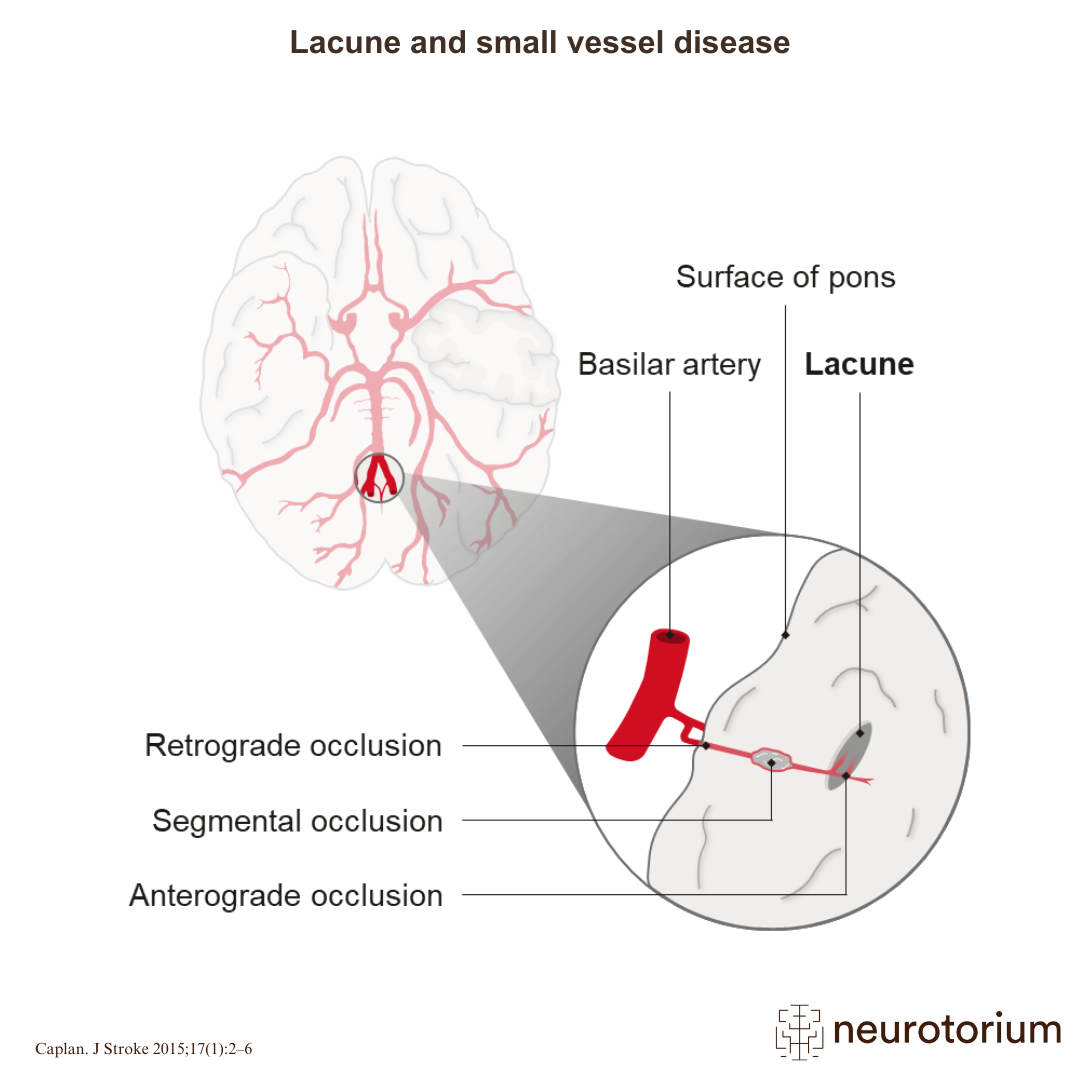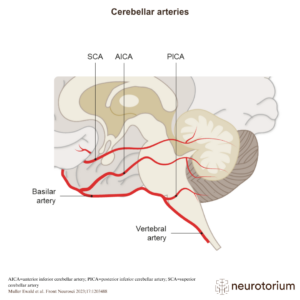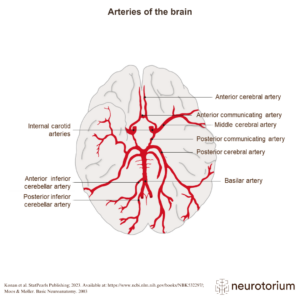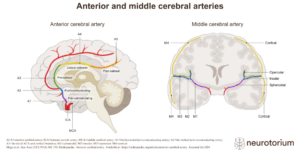Lacunar infarctions are small subcortical infarcts, <1.5 cm in diameter, within deep areas of the brain, which can occur due to:1-3
- Occlusion of a single penetrating artery due to lipohyalinosis within the artery but can also occur because of microatheromas
- Occlusion of the penetrator orifice from a large plaque in the mother artery, microembolism, vasculitis, hypercoagulable states, or genetic disease e.g., CADASIL
Roughly 1 in 5 strokes are estimated to be lacunar strokes.1





